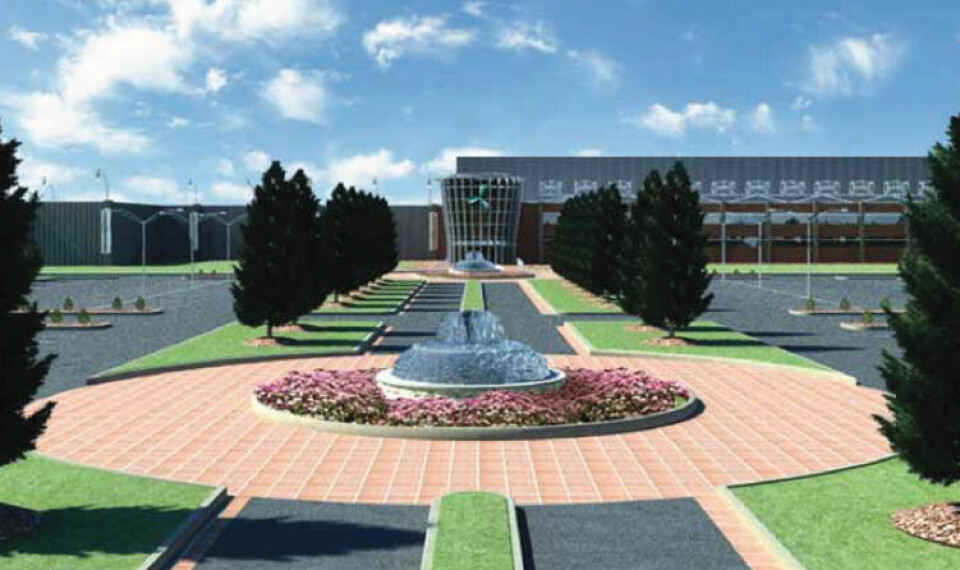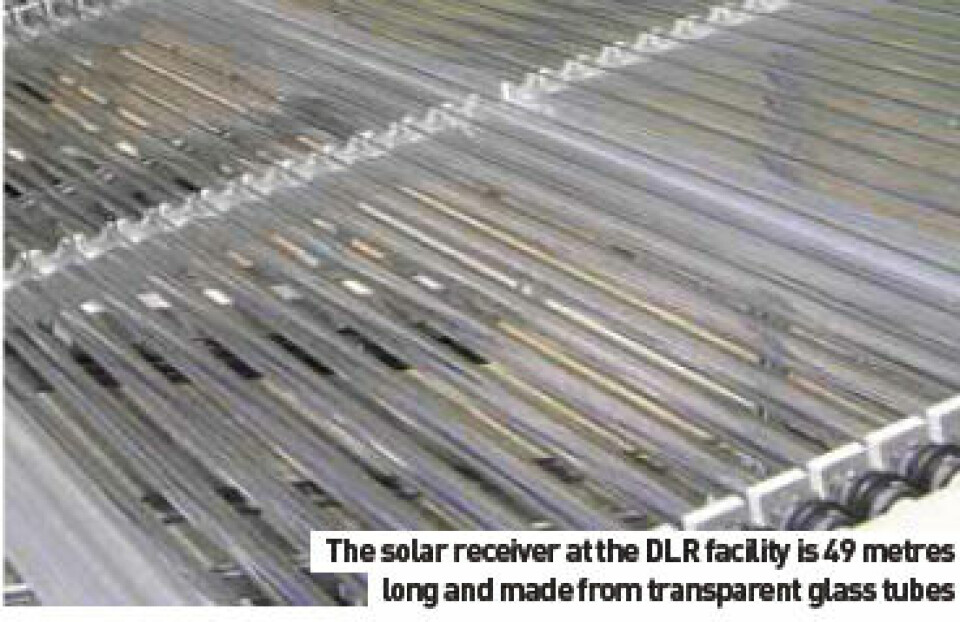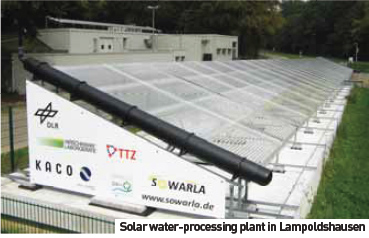Toxic haste

The clean-up of old – and even bomb-damaged – vehicle plants is a challenge for OEMs. The former Zastava car production facility, now located in Serbia, has only recently been cleaned in arguably the most hazardous and time-consuming automotive site reclamation ever undertaken. The process took almost 10 years to complete.
Located in Kragujevac, approximately 100km (60 miles) south of the now Serbian capital of Belgrade, the facility was part of an industrial complex made up of dozens of smaller companies, many of which are still on operation producing heavy machinery, cars and trucks, and even light weapons. The car factory, now owned by Fiat Group, is located on the Lepenica River, a tributary of the Velika Morava which in turn meets the Danube 60km downstream. In 1999, NATO bombing of the then Yugoslavia resulted in extensive damage to the car plant, allowing a toxic cocktail of chemicals to flow unchecked into Europe’s second largest river.
Following the cessation of hostilities, the United Nations Environmental Program Balkan Task Force (UNEP/BTF) began the difficult task of assessing the worst hot spots of environmental damage and the health risks posed by each site. It soon became apparent that controlling the large-scale contamination at the Zastava plant was an urgent priority. Kragujevac was bombed on two occasions in April 1999. Subsequently, large quantities of polychlorinated biphenyls (PCBs), a mix of 209 individual chlorinated compounds generally used as coolants and lubricants in transformers and other electrical equipment, were released into the surrounding environment. Due to the severe health risk posed by such substances, PCBs were banned in the US as long ago as 1977.
Zastava, Serbia’s oldest industrial fi rm, was founded in 1853. In 1904, it branched out into automotive repair work, but it wasn’t until 1953 that it started passenger vehicle production. The state-controlled fi rm built various small Fiat models under licence until 1990, some marketed under the Yugo brand in Europe and markets in North and South America. Production at Zastava was severely affected by Balkan war in the early 1990s, with its supply chain drying up due to international sanctions. Bombing by NATO forces followed in 1999. Though directed at the company’s arms-making operations, the automotive manufacturing operations were also targeted on several occasions. With a new Serbian government in place, Zastava, still state-owned, was recapitalised in late 2000. It began building the Florida, a small hatchback, with assembly of the second-generation Fiat Punto added in 2005, badged ‘Zastava 10’. In May 2008, Fiat Auto agreed to buy 70% of Zastava from the Serbian government. A planned major investment programme was delayed, only to be revived in less ambitious form in late 2009, as the recent European recession began to subside. According to statements from the Serbian government, Fiat Auto intends to manufacture a small car, codenamed Progetto 327, at the Kragujevac works, starting in 2011
At the Zastava site, a power station, the entire assembly line, the paintshop and a complex of office buildings were either heavily damaged or destroyed. According to the UN task force, two damaged transformers had leaked PCBs into the surrounding area. An estimated 1,400 litres of pyralene oil (transformer oil composed of PCBs and another highly toxic substance, tricholrobenzenes, otherwise known as ‘trike’) had leaked into the floor and waste pits. The gravel basin under the transformers, designed to contain such leaks, was unable to cope with the volume of fluid that was released. Concentrations of PCBs around the rainwater drain were found to be even higher than those inside the plant. Co-coordinated by UNEP/BTF, the clean-up programme involved a specialist team from the University of Kragujevac’s Institute of Chemistry. The partnership quickly began the process of removing contaminated concrete and layers of sub-soil. The excavated waste was packaged for final treatment, while a new soil and concrete base was laid down, sealed by an epoxy resin.
The next task was to dispose of 6,000m3 of PCBcontaminated waste water. This huge volume of liquid, having leaked from the bomb-damaged transformers, had reached open waste water pits in the paint hall. There, it mixed with water, paint sludge and general debris. Under these circumstances, the main concern was the health of the workers who would eventually return to the site. To avoid further cross-contamination (there was also leakage from the facility’s damaged sewerage system), the PCB-infected water was removed from the pits for treatment using a remediation method developed by a team of local and international experts.

The removal involved 120 tons of bottom sediment and debris, with an additional 10 tons of machinery being taken out and dismantled for disposal. The resulting hazardous waste was incinerated off-site. As there was, and still is, no approved facility for the destruction of such material in Serbia and Montenegro, the entire 315 tons of dangerous waste was sent to Switzerland and Germany for disposal. Fiat’s main concern at this final stage of the cleanup was the recovery and disposal of some 2,000 tons of waste paint. The liquid residue was contained and transported to a specialist facility in Austria for destruction. The clean-up was completed by UNEP/BTF, with the last phase of the removal process carried out in 2009.
The total cost to Fiat for the cleansing programme at Kragujevac came to €2.5m, and included the removal of 40,000m³ of debris. Approximately 315,000 litres of sixvalent chrome was shipped out for recycling. Oil from redundant factory machines was also sent for recycling, as was 60 tons of electronic waste, while the removal of 40 tons of shattered glass (dating from the 1999 bombing) marked completion of the clean up. Kragujevac City Council continues to carry out regular inspections on the lower course of the Lepenica River, and has also recently installed an automated station for the monitoring of airborne chemicals.
While the operation has done as much as possible to eliminate toxins, there are still major concerns over pollution in the adjoining river. Sadly, the contamination is still recorded in taken samples, though this is attributed to factories unrelated to automotive manufacturing. On a more positive note, the joint final assessment conducted by national authorities and UNEP has now concluded that the term ‘environmental hot spot’ no longer applies to Kragujevac. A major investment programme is now underway at the former Zastava works (recently renamed ‘Fiat Auto Serbia’) to bring production of a new vehicle to the refitted plant in 2011.

Suzuki tackles boron and fluorine leakage
While cleaning up a war-damaged automotive plant is a mercifully rare undertaking, many of the world’s larger OEMs occasionally find themselves having to deal with equally serious contamination issues. One such event happened in September 2008 at a Suzuki plant in Japan, where during periodic testing, fluorine levels at the company’s Takatsuka facility were found to have exceeded groundwater quality standards.
Environmental officials in Hamamatsu were contacted and an inspection was ordered. Pollutant tests were initiated on a monthly basis, but no specific cause for the contamination was found and all later test results fell within prescribed levels. At the same plant in January 2009, boron levels suddenly spiked above quality standards. The measurement was taken at the same observation well that had previously shown excessive fluorine levels, though other wells monitored by Hamamatsu officials near the plant indicated that boron levels were well within prescribed levels.
To uncover the source of any groundwater seepage, Suzuki commissioned an independent site investigation. The conclusion was that a receiving tank used in the plating process was the cause of the irregular readings. Repairs were made, including the addition of a double structure applied to prevent any recurrence of the problem. Since this event, Suzuki has continued efforts to clean underground water, while also installing a waste filter chamber and an odoureliminating system.
BMW implements water management strategies
Suzuki is by no means alone in maintaining ground water management systems at its global plants. In 2006, BMW tabled plans to both cut water consumption and waste water per vehicle by an annual average of 5%, amounting to a target total water usage reduction of 30% by 2012 (compared with 2006 levels).

As part of this initiative, BMW now only withdraws as much water from ground water resources as can be replenished naturally, says the OEM. To compensate for the water used at each manufacturing plant, rainwater is transferred back to the water table via a series of underground drainage ditches, instead of directing the water to a treatment plant or other body of water. As a general rule, waste water at group production sites is conditioned in a company-owned facility before being passed to a public waste water treatment plant. Using the rain water replenishment technique, waste water levels and the demand for fresh water are reduced.
BMW’s Steyr engine plant (Austria) is another example of how contaminated water can be managed. In 2007, the facility had specific filters and membrane technologies fitted to condition all production-related waste water before it was fed back into the production process. BMW claims this single initiative saves up to 30m litres of water per year; the project has been such a success that a canal that used to carry waste water from the plant has been made obsolete. Saving water is also key to BMW production strategies. At BMW Rosslyn, located in South Africa, a new €150,000 waste water treatment plant not only purifies the water, but the efficiency of the system means 40% of all waste water is fed back into the production process, saving an estimated 2m litres of water per year, says the company.
Meanwhile, at three German BMW plants (Munich, Berlin and Leipzig), and at the Rolls-Royce factory in Goodwood, UK, digital ground water models are used to ‘track’ pollution. Each of these systems can simulate the flow and spread of pollutants through local ground water. Should a pollutant be detected, it can be traced and extracted using wells installed with special pumps, says BMW.
Life after vehicle manufacturing
Most visitors flying into Atlanta, Georgia, will have no idea that a huge addition to the world’s busiest passenger airport was once the location of Ford’s Hapeville vehicle manufacturing plant.
The site, purchased from Ford in June 2008 by Jacoby Development, has been subject to a long, and at times difficult, clean-up process. This followed the demolition of old buildings on the 128-acre site and the subsequent creation of mounds of steel, concrete, tin, copper and asphalt, each material eventually sent away for recycling. Ford worked with D.H. Griffin (DHG), an environmental services company which carries out the demolition and decontamination of redundant industrial sites. At Hapewood, DHG was tasked with removing asbestos and petroleum, as well as a quantity of unused paint, buried in a pit decades earlier.

Following the completion of the environmental cleanup, a new business park has risen where the assembly plant stood. Aerotropolis Atlanta will eventually comprise a mixed-use development of 6.5m sq. ft., comprising office, hotel, retail, data centre, conference and parking facilities. At the site of another decommissioned Ford assembly plant, in Wixom, Michigan, an even more dramatic transformation is taking place. Formerly the main manufacturing plant for the Lincoln division, Wixom Assembly was closed in 2007 after 50 years of operation, during which it built 6.6m vehicles.
Xtreme Power of Austin, Texas, and Clairvoyant Energy of Santa Barbara, California, are transforming the former Wixom Assembly into one of the nation’s largest renewable energy manufacturing parks, with the companies putting forward a combined initial investment of more than $725m to redevelop the 320-acre site and its 4.7m sq. ft. of building space. Utilizing approximately half of the currently available area, the two companies will manufacture solar power and energy storage systems.
Both Clairvoyant and Xtreme Power are working to bring in additional green-energy manufacturing and say they will support companies leasing the remaining space. Redevelopment work at Wixom began earlier this year, with manufacturing activity due to commence in late 2011. Overall, more than 4,000 direct jobs are being created, with thousands more linked to associated supplier networks. Yet another former Ford plant, this time in Missouri, has undergone a 16-month transformation where harmful materials were removed after the demolition of the 60-year old facility. Ford Hazelwood employed over 2,000 workers, but was shuttered in spring 2006. Two years later, Californiabased Panattoni Development bought the 160-acre site and an ongoing clean-up operation was put into place.
With demolition activities starting in July 2008, Panattoni was concerned with the possible spread of potentially hazardous dust. To prevent this, at the height of the detox operations, up to 80,000 gallons of water per day were used to damp down the site. Following the removal of soil, concrete and other residue, the process of sorting leftover materials for recycling was allowed to start. Panattoni says it recycled 95% of the former 3.3m sq. ft. vehicle manufacturing plant. This included 50,000 tons of steel, 7,500 tons of copper and stainless steel, and 450,000 tons of concrete and masonry, to be re-used for road beds and building pads, it says.
Panattoni’s newly-opened Aviator Business Park now serves as a showcase for the potential represented by once heavily-polluted brownfield sites, claims the company. It says testing has found only minimal residual environmental issues.
Decontaminating waste water with sunlight
With a name that sounds more like an alien race from Star Trek than a process for removing chemical pollutants from waste water, RayWOx is creating cautious excitement for those groups and individuals charged with finding new ways of cleaning up industrial sites. Developed by the German Aerospace Centre (Deutsches Zentrum für Luft- und Raumfahrt; DLR) at its Lampoldshausen laboratories, the system uses solar energy to remove organic and inorganic contaminants from water at industrial sites.
Water-treatment systems using ultraviolet light to help destroy the RNA and DNA of viruses, bacteria and protozoa is nothing new. But the photochemists at DLR say they have improved two-fold on this, scaling up the industrial scrubbing process and, crucially, using sunlight to not only destroy bacteria but also remove chemical pollutants. A solar receiver is key to the waste water cleansing process, says the company. The removal of pollutants is done by combining photocatalysts and sunlight to create a lightactivated catalyst. At the Lampoldshausen facility, one of two receivers treats either lightly polluted or highly-toxic water. RayWOx is able to eliminate antibiotics, X-ray contrast media, hormones, and, of particular interest to the automotive industry, chlorinated hydrocarbons from polluted groundwater, as well as toxic substances in exhaustair scrubbing solutions, says the company.
To prove the system, DLR has tested the system on waste water heavily polluted with rocket fuel from the engine test facilities at the adjacent Institute of Space Propulsion. This process, since expanded for larger applications, sees the waste water pass through a solar receiver made of transparent glass pipes. Iron ions act as a photocatalyst, while small quantities of hydrogen peroxide and solar radiation produce oxidising agents known as hydroxyl radicals. These filter out the pollutants by destroying their basic molecular structure. What remains from the process is clean water, the acid having been neutralised, causing the iron to become insoluble. The remaining iron oxide by-product, once recovered, can be recycled.
If the water to be treated is less heavily polluted, different glass tubes are used. Coated with titanium dioxide, these act as semiconductors. Negatively-charged electrons are displaced from the crystal structure, creating a positivelycharged void that works as an oxidiser, thanks to the introduction of ultraviolet light.
At the Lampoldshausen test centre, solar reactors take between one and two hours to eliminate all oxidisable contamination from 4,500 litres of industrial waste water. According to DLR, the process would be even faster in regions with stronger sunlight.
The environmentally-friendly nature of the cleaning process has also provided a marketing boost. KACO New Energy is about to launch the technology under the RayWOx brand name, with the Neckarsulm-based company developing the industrial application in conjunction with another German firm, Hirschmann Laborgeräte. KACO maintains that, thanks to the photovoltaic cells used to power the pumps and control electronics, the system is both green and affordable.
The scientists who created the RayWOx system are now working on a decontamination system that uses titanium dioxide, which is reported to result in water clean enough for drinking.


